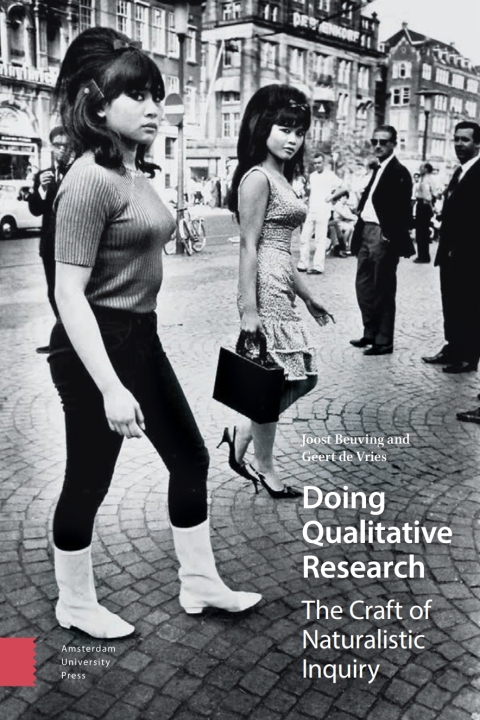Description
Efnisyfirlit
- Contents
- List of boxes
- Box 1 – Naturalistic inquiry: art, craft, or recipe?
- Box 2 – The Heider-Simmel experiment
- Box 3 – Positivism and interpretivism as academic social facts
- Box 4 – The problem of terminology
- Box 5 – Grounded theory in practice: A didactic case study
- Box 6 – The case of Senegalese boat migrants
- Box 7 – Observation broadly defined
- Box 8 – Observational categories for the study of primates
- Box 9 – The student, the fish, and Agassiz
- Box 10 – Applying Merton and Kendall’s four criteria
- Box 11 – Mass observation in Great Britain
- Box 12 – Death of a Salesman, by Arthur Miller
- Box 13 – An example of naturalistic social network analysis
- Box 14 – Coding example: The lady in red
- Box 15 – The use of coding software
- List of figures
- Figure 1 – The arc of naturalistic inquiry
- Figure 2 – Place of naturalistic inquiry in social research
- Figure 3 – Description, interpretation, and explanation
- Figure 4 – A still from the Heider-Simmel experiment
- Figure 5 – Definitions of the situation and social facts
- Figure 6 – Observation in social research
- Figure 7 – Textual levels within field notes
- Figure 8 – Domains and stages in a life course and focus of interviewer
- Figure 9 – Non-fiction image: young child at work
- Figure 10 – Still from Yasujiro Ozu, Tokyo Story
- Figure 11 – Example of a simple social network
- Figure 12 – Thin description, thick description, and theory writing
- Figure 13 – The arc of naturalistic inquiry, with hermeneutic steps
- Acknowledgements
- Introduction: The arc of naturalistic inquiry
- Naturalistic inquiry and qualitative research
- Genesis and audience of the book
- Outline
- 1. On naturalistic inquiry: Key issues and practices
- 1.1. Positivism and interpretivism: Auguste Comte versus Max Weber
- 1.2. Describing, understanding, and explaining
- 1.3. Definitions of situations and social facts
- 1.4. Positivist and naturalistic designs
- 1.5. Qualitative versus quantitative methods?
- 1.6. Validity and reliability in naturalistic inquiry
- 2. Theorizing society: Grounded theory in naturalistic inquiry
- 2.1. Dissatisfaction with structural functionalism and grand theory
- 2.2. The intellectual pedigree of symbolic interactionism
- 2.3. Grounded theory in naturalistic inquiry: The problem of generalization and inference
- 2.4. Conclusion
- 3. Looking at society: Observing, participating, interpreting
- 3.1. Enlightenment roots
- 3.2. Observations in social research: Positivism and naturalistic inquiry
- 3.3. Naturalistic observations: Looking at everyday life
- 3.4. The observer as participant
- 3.5. Practical methodology in looking at society
- 3.6. Conclusion
- 4. Talking about society: Interviewing and casual conversation
- 4.1. From workers’ inquiry to social survey
- 4.2. The open interview
- 4.3. The life history interview
- 4.4. The creative or active interview
- 4.5. Practical methodology in interviewing
- 4.6. Conclusion: Casual conversation
- 5. Reading society: Texts, images, things
- 5.1. Texts
- 5.2. Images: Drawings, paintings, maps, photographs, film
- 5.3. Things
- 5.4. Practical methodology in reading society
- 5.5. Conclusion
- 6. Disentangling society: The analysis of social networks
- 6.1. The analysis and theory of social networks
- 6.2. A note on key thinkers: Roles, sociogenesis, and transactions
- 6.3. Applications of social network analysis in naturalistic inquiry
- 6.4. Practical methodology in disentangling society
- 6.5. Conclusion
- 7. Not getting lost in society: On qualitative analysis
- 7.1. Text and interpretation
- 7.2. Practical methodology: Qualitative analysis in six steps
- 7.3. Conclusion
- 8. Telling about society: On writing
- 8.1. Thick description and social theory
- 8.2. Writing as Verstehen
- 8.3. Contested issues: The ‘I’, literary technique, composite cases
- 8.4. Practical methodology in telling about society
- 8.5. Conclusion
- Epilogue: Present and future of naturalistic inquiry
- Naturalistic inquiry in social research
- Accountability in naturalistic inquiry
- The future
- References
- Index of names
- Index of subjects






Reviews
There are no reviews yet.